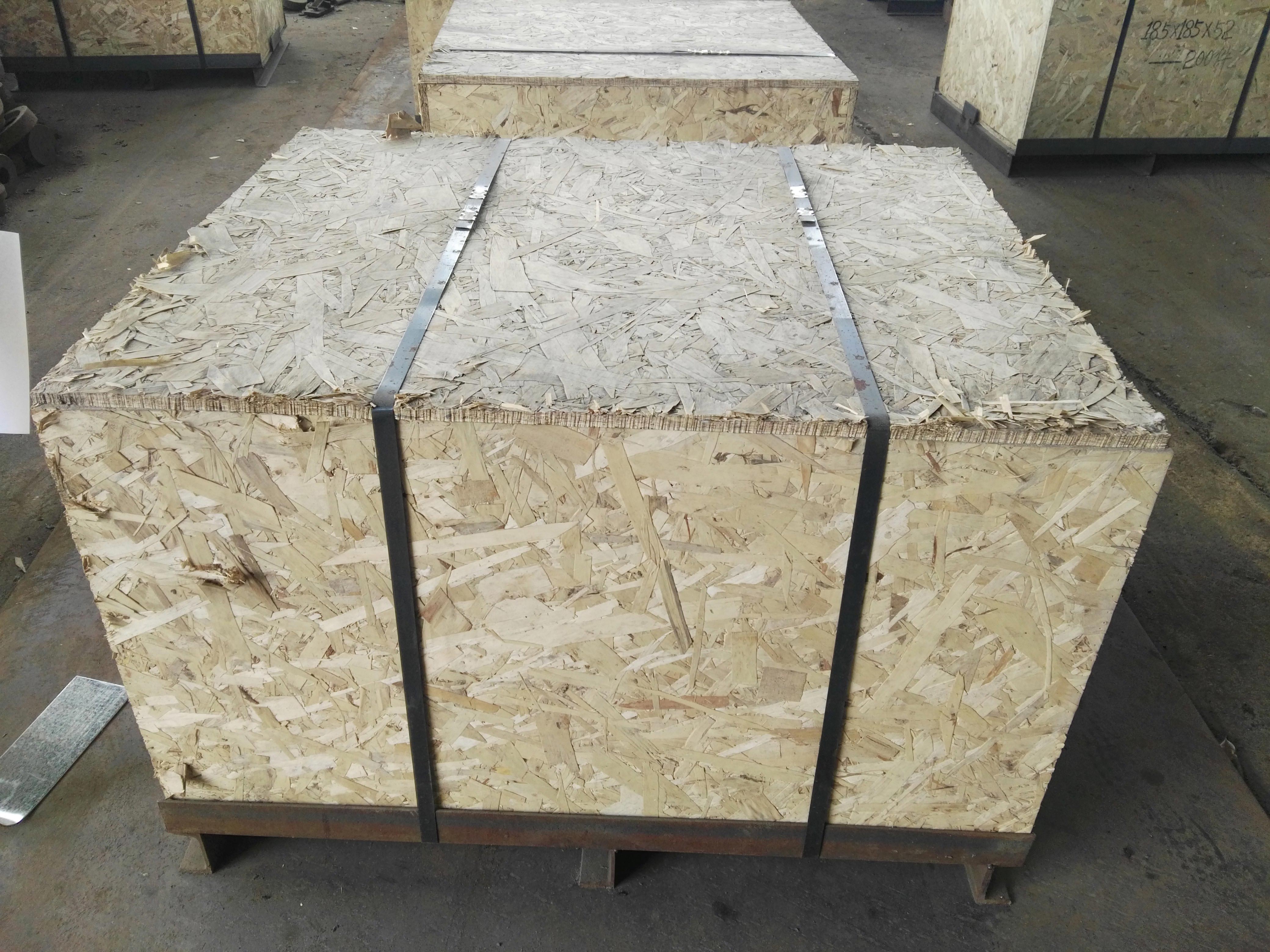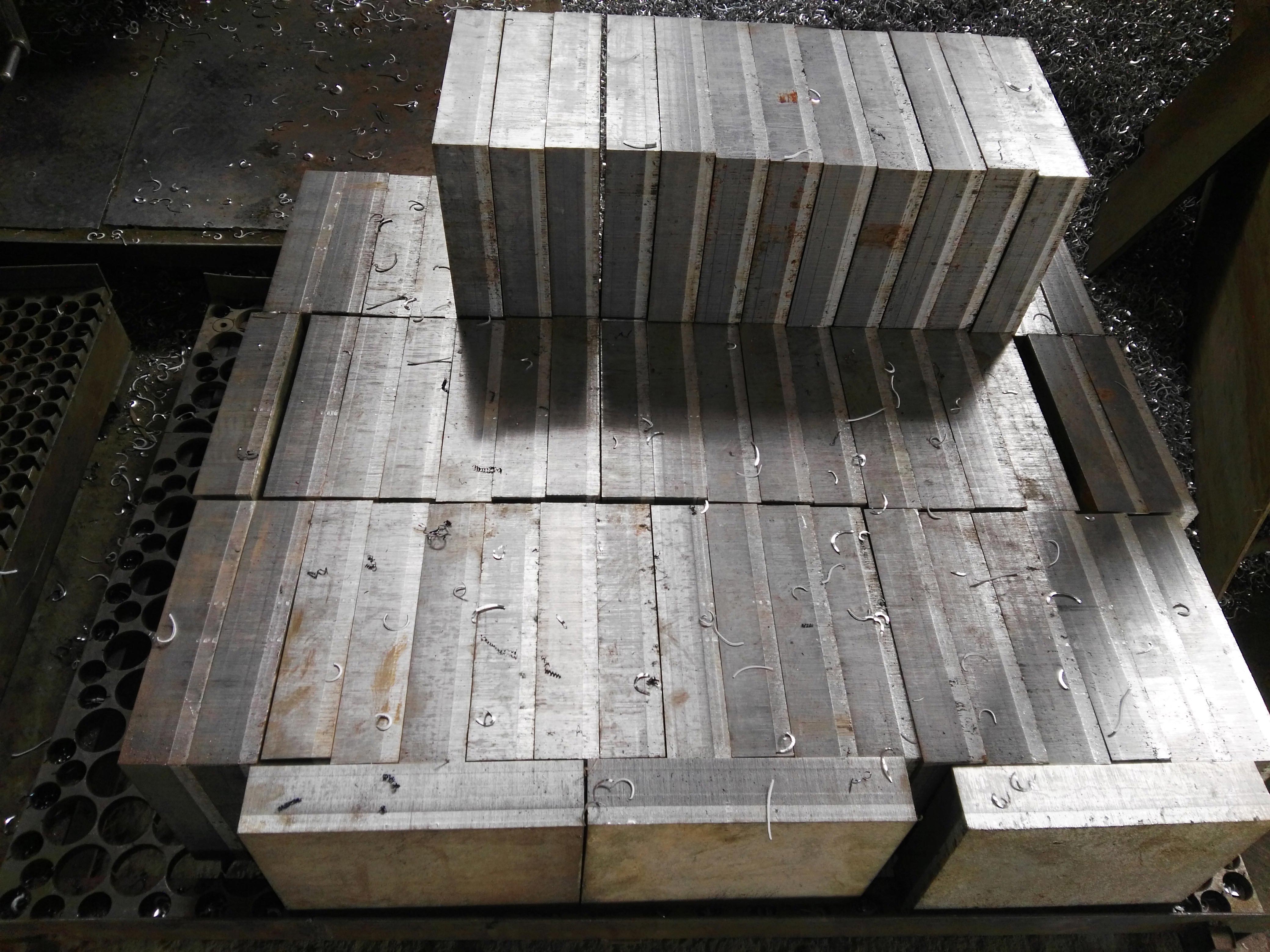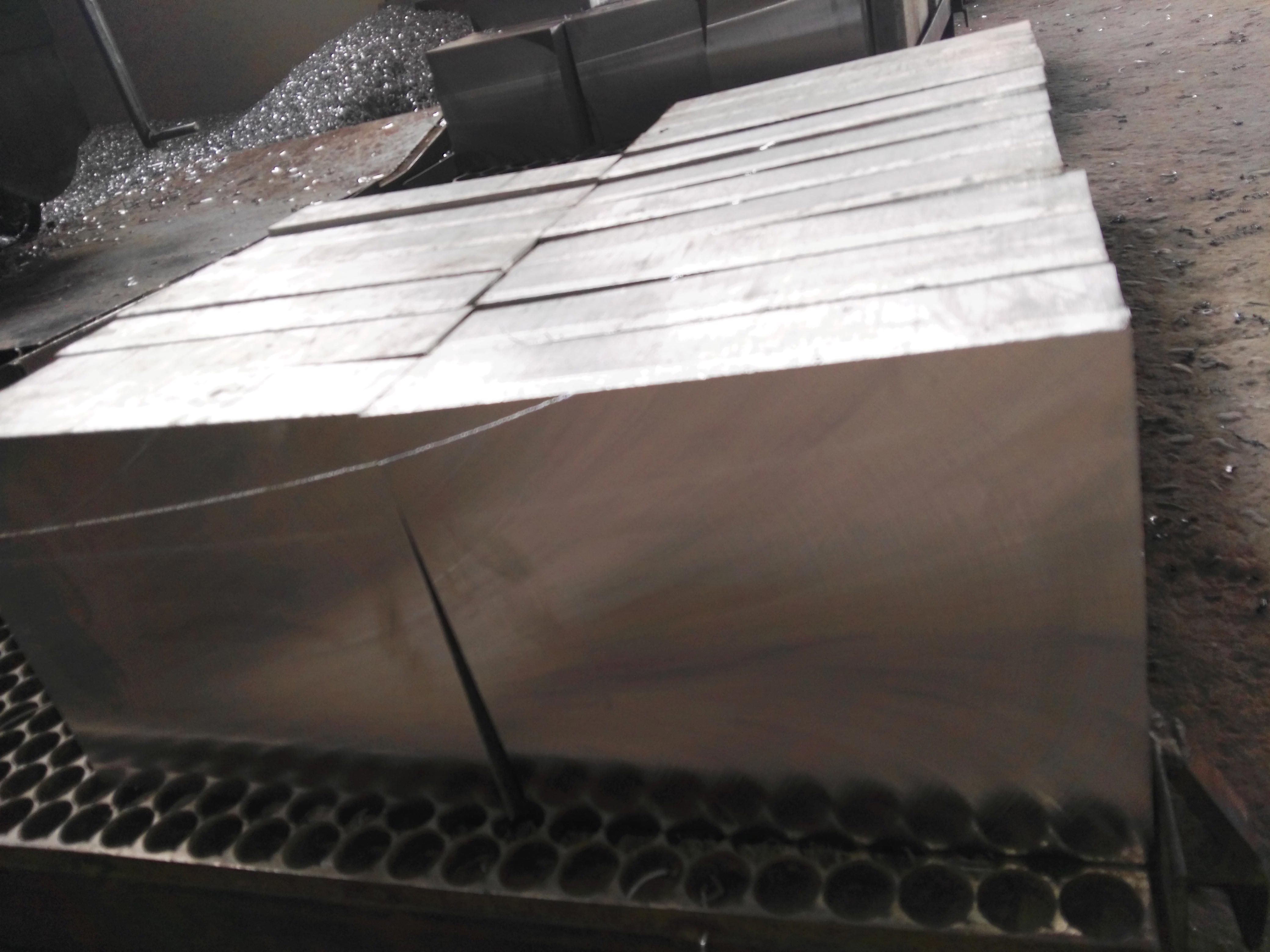1.The introduction of Steel-Alu Transition Joint
Electrical Steel-Alu Transition Joints, also known as Bimetal Steel-Alu Transition Joint, Clad Steel-Alu Transition Joint, and electrical transition joints,etc, are widely used in the electrolytic aluminum industry and metallurgical industry. Electrical Steel-Alu Transition Joints are metal composite materials processed by explosive welding. As a new welding process, explosive welding is a combination of pressure welding, fusion welding and diffusion welding. It can vary the strength difference, the expansion coefficient is different, and the performance is different. The molten metal is welded together to save precious metals and facilitate the reasonable combination and matching of the properties of the composite material and the base material.
2.The structure of Electrical Steel-Alu Transition Joints
Electrical Steel-Alu Transition Joints (sheets) are explosively compounded with aluminum/steel, copper/aluminum and other non-ferrous metals. They are widely used in the electrolytic aluminum and metallurgical industries. The aluminum steel explosive soldering block is divided into a cathode explosive soldering block and an anode explosive soldering block, and is a conductive transition device in the electrolytic cell manufacturing process of the electrolytic aluminum factory. The aluminum steel explosive soldering block acts as an aluminum steel transition joint in the electrolytic cell, and the aluminum bus bar and the steel bar are tightly combined to play a transitional role. In addition, since the interface of the explosion welding belongs to the metallurgical bond between the atoms, the interface thereof Resistance is negligible compared to mechanical performance connections, which not only saves energy but also extends service life.
3. The material and specifications of Electrical Steel-Alu Transition Joints
1) The material and specifications of Steel-Alu Transition Joint:
A. Material:
Aluminum: 1050, 1060,1100,6101,6060, 5083, 6061, 2A11,etc
Titanium: TA1, TA2, TA9, TA10,TA Grade 1,etc
Steel: SUS304, Q235, Q245R, Q345R, DH36, CCSB, AISI 1008, etc
B. Specifications: 1 ~ 25mm / 2 ~ 120mm / 2000 x 6000mm
C. Product standards: Q/XB1906-94, CB1343-1998,etc
D.Application areas: electrolytic aluminum, fertilizer, transition joints, ships, aerospace, instrumentation, cryogenic engineering.
2)The material and specifications of Copper-Alu Transition Joints:
A.Material: L.LY.LF/T.B.H.Q
B.Sspecifications: 1 ~ 25mm / 2 ~ 120mm / 2000 x 6000mm
C.Product standard: GB13328-91 or JISG3604-92,etc
D. Application areas: power industry, electronics industry, etc.
4: Explosive production process of Electrical Steel-Alu Transition Joints

5.Technical Parameters of Electrical Steel-Alu Transition Joints
6.The Characteristics of Electrical Steel-Alu Transition Joints:
1 Each batch must have an ultrasonic flaw detection certificate.
2 Sampling inspection of finished products 2 - 3%, welding surface is not less than 98%.
3 The tensile strength of the contact surface is not less than 120 MPa.
4 The contact surface shear strength is not less than 80MPa.
5 Heat resistance is not less than 400℃ .
6 Pass 3000A current at normal temperature, the voltage drop should not be higher than 2mv.
7 The resistivity is less than 8.16×10-8W·m
8 The appearance is regular and there is no scar, and the weld seam must not be cracked.
7. Electrical Steel-Alu Transition Joints Packing
Anticorrosion Oil-Paper and Polywood Box or as customer’s requirements.
Electrical Steel-Alu Transition Joints, also known as Bimetal Steel-Alu Transition Joint, Clad Steel-Alu Transition Joint, and electrical transition joints,etc, are widely used in the electrolytic aluminum industry and metallurgical industry. Electrical Steel-Alu Transition Joints are metal composite materials processed by explosive welding. As a new welding process, explosive welding is a combination of pressure welding, fusion welding and diffusion welding. It can vary the strength difference, the expansion coefficient is different, and the performance is different. The molten metal is welded together to save precious metals and facilitate the reasonable combination and matching of the properties of the composite material and the base material.
2.The structure of Electrical Steel-Alu Transition Joints
Electrical Steel-Alu Transition Joints (sheets) are explosively compounded with aluminum/steel, copper/aluminum and other non-ferrous metals. They are widely used in the electrolytic aluminum and metallurgical industries. The aluminum steel explosive soldering block is divided into a cathode explosive soldering block and an anode explosive soldering block, and is a conductive transition device in the electrolytic cell manufacturing process of the electrolytic aluminum factory. The aluminum steel explosive soldering block acts as an aluminum steel transition joint in the electrolytic cell, and the aluminum bus bar and the steel bar are tightly combined to play a transitional role. In addition, since the interface of the explosion welding belongs to the metallurgical bond between the atoms, the interface thereof Resistance is negligible compared to mechanical performance connections, which not only saves energy but also extends service life.
3. The material and specifications of Electrical Steel-Alu Transition Joints
1) The material and specifications of Steel-Alu Transition Joint:
A. Material:
Aluminum: 1050, 1060,1100,6101,6060, 5083, 6061, 2A11,etc
Titanium: TA1, TA2, TA9, TA10,TA Grade 1,etc
Steel: SUS304, Q235, Q245R, Q345R, DH36, CCSB, AISI 1008, etc
B. Specifications: 1 ~ 25mm / 2 ~ 120mm / 2000 x 6000mm
C. Product standards: Q/XB1906-94, CB1343-1998,etc
D.Application areas: electrolytic aluminum, fertilizer, transition joints, ships, aerospace, instrumentation, cryogenic engineering.
2)The material and specifications of Copper-Alu Transition Joints:
A.Material: L.LY.LF/T.B.H.Q
B.Sspecifications: 1 ~ 25mm / 2 ~ 120mm / 2000 x 6000mm
C.Product standard: GB13328-91 or JISG3604-92,etc
D. Application areas: power industry, electronics industry, etc.
| Name | Basic metal thickness(mm) | Clad metal thickness(mm) | Size (L*W*H)(mm) |
| Copper-Alu Transition Joint | Copper: 38~40 | Alu:10~12 | Customized |
| Steel-Alu Transition Joint | Steel: 38~40 | Alu:10~12 | Customized |
4: Explosive production process of Electrical Steel-Alu Transition Joints

5.Technical Parameters of Electrical Steel-Alu Transition Joints
| Tensile strength | ≥120Mpa |
| Shearing strength | ≥80Mpa |
| Non-breaking temperature | ≦400℃ |
| Interface bonding rate | 100% |
| Voltage drop | ≦1.8mV(2mV |
| Electrical Resistivity | 8.16 x 10 Ω.m |
6.The Characteristics of Electrical Steel-Alu Transition Joints:
1 Each batch must have an ultrasonic flaw detection certificate.
2 Sampling inspection of finished products 2 - 3%, welding surface is not less than 98%.
3 The tensile strength of the contact surface is not less than 120 MPa.
4 The contact surface shear strength is not less than 80MPa.
5 Heat resistance is not less than 400℃ .
6 Pass 3000A current at normal temperature, the voltage drop should not be higher than 2mv.
7 The resistivity is less than 8.16×10-8W·m
8 The appearance is regular and there is no scar, and the weld seam must not be cracked.
7. Electrical Steel-Alu Transition Joints Packing
Anticorrosion Oil-Paper and Polywood Box or as customer’s requirements.














